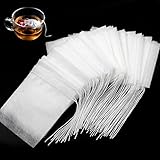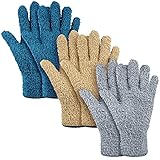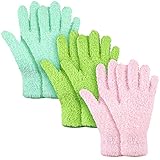Exquisite and eco-friendly, leaf fibers have emerged as a sustainable alternative in the textile and manufacturing industries. In a world increasingly leaning towards environmentally conscious choices, the search for the best leaf fibers has become a top priority for consumers. From the tantalizing softness of bamboo to the robust durability of banana fibers, the market is brimming with options that not only offer exceptional quality but also contribute to a greener planet.
In this comprehensive guide, we delve into the realm of the best leaf fibers to bring you insightful reviews and a meticulous buying guide. Whether you are a fashion enthusiast seeking the softest fabrics or a conscious consumer looking to embrace sustainable materials, our curated selection encompasses a range of leaf fibers that promise both excellence and environmental responsibility. Join us on a journey through the exquisite world of best leaf fibers as we explore their unique qualities and guide you towards making informed purchasing decisions.
We’ll cover the best leaf fibers later in this article. Meanwhile, feel free to check out these related products on Amazon:
Last update on 2025-12-11 / #Ad / Affiliate links / Images from Amazon Product Advertising API
Exploring the World of Leaf Fibers
Leaf fibers are natural fibers that are extracted from various types of plant leaves, such as banana, pineapple, and sisal. These fibers are known for their strength and durability, making them popular materials for use in textiles, ropes, and other products. Leaf fibers are renewable and biodegradable, making them a sustainable choice for eco-friendly production.
Banana fibers, derived from the pseudostems of banana plants, are soft and lustrous, making them ideal for textile applications such as clothing and home furnishings. Pineapple leaf fibers, extracted from the leaves of pineapple plants, are strong and lightweight, commonly used in the production of bags, shoes, and even luxury fashion items. Sisal fibers, obtained from the leaves of the agave sisalana plant, are sturdy and resistant to deterioration, making them suitable for heavy-duty applications like ropes, carpets, and mats.
Leaf fibers offer a natural alternative to synthetic materials, providing a renewable and biodegradable option for various industries. With their versatility and sustainability, leaf fibers continue to gain popularity as a eco-conscious choice for manufacturers and consumers alike.
The Best Leaf Fibers
01. sisal
Sisal, a natural fiber derived from the Agave plant, is a multipurpose material with a wide range of applications. Its durability and sustainability make it a popular choice for rugs, carpets, and twine. The rough texture of sisal provides excellent traction, making it ideal for use in high-traffic areas.
Additionally, sisal is an eco-friendly option, as it is biodegradable and renewable. Its neutral color complements various home decor styles, adding a touch of natural elegance to any space. Whether you’re looking for a sturdy rug or eco-conscious packaging material, sisal is a versatile and reliable choice.
02. abaca
Abaca, also known as Manila hemp, is a versatile and sustainable material derived from the leaf sheaths of a banana plant. Its robust fibers make it an excellent choice for a wide range of products, from ropes and textiles to furniture and handicrafts. With its natural durability and resistance to wear and tear, abaca products are known for their longevity and strength.
Not only is abaca environmentally friendly due to its fast growth and minimal need for pesticides, but it also supports local communities by providing a source of income through its cultivation and production. Its unique blend of strength, flexibility, and sustainability makes abaca a top choice for eco-conscious consumers seeking quality, enduring products.
03. hemp
Known for its versatile applications, hemp is a powerhouse plant that continues to gain popularity across various industries. Its durable fibers make it an eco-friendly choice for textiles, offering breathability and strength. In the realm of wellness, hemp-derived products are prized for their potential health benefits, with CBD-infused items rising in demand for their reported calming effects.
Additionally, hemp’s sustainable cultivation process makes it an attractive option for environmentally conscious consumers. From skincare to construction materials, the adaptability of hemp showcases its potential to revolutionize multiple sectors, providing a promising glimpse into a more sustainable future.
“Top Reasons to Invest in Leaf Fibers
Leaf fibers, extracted from various plant sources such as flax, hemp, and sisal, serve an essential role in several industries due to their unique qualities and versatility. One primary reason people need to buy leaf fibers is their remarkable strength and durability, making them ideal for producing textiles, ropes, and other materials that require resilience and longevity. In addition, leaf fibers are known for their eco-friendly nature, as they are biodegradable and renewable, making them a sustainable choice for environmentally conscious consumers.
Moreover, the best leaf fibers offer excellent moisture-wicking properties, making them suitable for textiles used in sportswear and outdoor gear. This feature helps in keeping the skin dry and comfortable during physical activities, enhancing overall performance and comfort for the wearer. As a result, the demand for leaf fibers continues to rise as more people prioritize high-quality, sustainable products that contribute to a healthier planet.
In summary, the versatility, eco-friendliness, and performance benefits of the best leaf fibers make them a valuable commodity for a range of industries and consumers. By choosing leaf fibers, individuals not only invest in durable and functional products but also support sustainable practices that benefit both the environment and society as a whole.
Shopping Tips for Leaf Fibers
Considering various factors is vital when selecting the ideal leaf fibers for your needs. The right choice will depend on factors such as the type of leaf fiber, intended use, and sustainability. By carefully evaluating these key aspects, you can ensure that you purchase high-quality leaf fibers that best suit your requirements.
Strength And Durability
Strength and durability are crucial factors to consider when selecting leaf fibers for purchase. These characteristics determine the longevity and resilience of the products made from the fibers, ensuring that the items retain their quality and functionality over time. Fibers with high strength and durability are essential for applications that require resistance to wear and tear, such as in textiles, ropes, or paper production.
Choosing leaf fibers renowned for their strength and durability also promotes sustainability by reducing the frequency of replacement and ultimately minimizing waste. Opting for fibers that possess these qualities can lead to a more sustainable and eco-friendly purchase, as the products’ extended lifespan contributes to a reduced environmental impact. By prioritizing strength and durability when buying leaf fibers, individuals can make informed choices that benefit both themselves and the environment.
Softness And Comfort
Considering the softness and comfort of leaf fibers is crucial when making a purchase decision. Textiles made from soft and comfortable leaf fibers provide a pleasant wearing experience, making them ideal for items that come into direct contact with the skin. Whether it’s clothing, bedding, or accessories, choosing soft and comfortable leaf fibers ensures that the product will feel gentle and luxurious against the skin, enhancing overall satisfaction and comfort for the wearer.
Sustainability And Eco-Friendliness
Choosing leaf fibers that are sustainable and eco-friendly is vital for minimizing environmental impact. By opting for fibers that are sourced and produced in an environmentally responsible manner, individuals can contribute to conservation efforts and support ethical practices. Sustainability in leaf fiber production helps preserve natural resources, reduces pollution, and supports the well-being of ecosystems and local communities. Making eco-conscious choices not only benefits the planet but also promotes a more ethical and sustainable fashion industry.
Versatility In Applications
Considering the versatility in applications of leaf fibers is essential when choosing the right material for various projects. With its ability to be utilized in a wide range of industries such as textiles, papermaking, packaging, and even construction, leaf fibers offer a sustainable and durable option for different applications. By selecting a material that can be adapted to different uses, individuals can maximize the benefits of leaf fibers and explore their full potential in diverse projects with ease and efficiency.
Sustainable Practices In Leaf Fiber Production
In the section discussing sustainable practices in leaf fiber production, it is important to highlight the environmental impact of the manufacturing process. Sustainable practices in this context refer to methods that minimize harm to the ecosystem while maximizing the utility of natural resources.
Efforts to promote sustainability in leaf fiber production may involve the use of organic farming techniques, efficient water usage, and minimizing chemical inputs. By adopting such practices, manufacturers can ensure that the production process does not deplete natural resources or harm the environment in the long run.
Embracing sustainability in leaf fiber production also extends to ethical considerations such as fair labor practices and social responsibility. Ensuring that workers are treated fairly and that community interests are safeguarded can contribute to a more holistic approach to sustainable manufacturing practices.
Benefits Of Using Leaf Fibers In Everyday Life
Using leaf fibers in everyday life offers numerous benefits. Firstly, these natural fibers are sustainable and environmentally friendly. By utilizing materials that come from renewable sources such as leaves, we reduce our reliance on non-renewable resources and minimize our carbon footprint. This eco-friendly choice helps in conserving the planet’s resources for future generations.
Secondly, leaf fibers are biodegradable, making them a great option for reducing waste. Unlike synthetic materials that can take hundreds of years to decompose, products made from leaf fibers can easily break down naturally without harming the environment. This sustainable characteristic promotes a circular economy and supports a more environmentally responsible lifestyle.
Lastly, products made from leaf fibers are often durable and sturdy, offering practicality and longevity in everyday use. From textiles and packaging materials to furniture and home decor, incorporating leaf fibers into various aspects of daily life can contribute to a more sustainable and eco-conscious lifestyle. Embracing these natural materials can not only benefit the environment but also enhance the quality and sustainability of our everyday products.
Frequently Asked Questions
What Are The Benefits Of Using Leaf Fibers In Various Products?
Using leaf fibers in various products offers several benefits. These fibers are renewable and biodegradable, making them environmentally friendly. They are also lightweight yet strong, providing durability to the products. Additionally, leaf fibers are often hypoallergenic, making them suitable for individuals with sensitivities to other materials. Their natural appearance and texture add a unique aesthetic appeal to the products, making them stand out in the market. Overall, incorporating leaf fibers in products contributes to sustainability and offers a range of practical and aesthetic advantages.
How Do Different Types Of Leaf Fibers Compare In Terms Of Durability And Sustainability?
Leaf fibers such as sisal and abaca are known for their durability, making them ideal for various applications such as rope and textiles. These fibers are strong and resistant to wear and tear, making them long-lasting. Conversely, leaf fibers like banana and bamboo are more sustainable options due to their fast growth rate and minimal need for pesticides. They are also biodegradable, contributing to a more eco-friendly production cycle. Overall, while different leaf fibers vary in terms of durability and sustainability, each type offers unique benefits for various uses.
Are There Any Specific Recommendations For Choosing The Best Leaf Fiber Products?
When choosing leaf fiber products, look for organic and sustainable options to ensure quality and environmentally-friendly practices. Consider the source of the leaves and the manufacturing process to ensure a high level of purity and potency. Look for certifications from reputable organizations, such as USDA Organic or Fair Trade, to guarantee the product’s quality. Additionally, read customer reviews and consult with healthcare professionals to find a product that suits your specific needs.
How Can Consumers Identify High-Quality Leaf Fibers When Shopping For Such Products?
Consumers can identify high-quality leaf fibers by looking for products made from natural, sustainably sourced materials such as banana, hemp, or flax. Check for certifications like Global Organic Textile Standard (GOTS) or OEKO-TEX to ensure environmental and social responsibility. Feel the texture for softness and durability. Look for details like tight weaves and uniform coloring. Research the brand’s reputation for transparency and ethical practices to ensure a high-quality purchase.
Are There Any Maintenance Tips For Extending The Lifespan Of Leaf Fiber Items?
To extend the lifespan of leaf fiber items, avoid exposing them to excessive moisture or prolonged sunlight. Regularly dust or gently vacuum them to prevent dirt buildup. Store them in a cool, dry place away from direct sunlight. If needed, gently spot clean with a mild detergent and water. Avoid harsh chemicals or abrasive scrubbing which can damage the fibers.
Conclusion
In conclusion, the diverse range of leaf fibers showcased in this article offer exceptional quality and sustainability for various applications. Whether you’re seeking eco-friendly textiles, durable packaging materials, or nutrient-rich supplements, the best leaf fibers highlighted here stand out for their versatility and eco-conscious attributes. Choosing products made from the best leaf fibers not only benefits the environment but also promotes a more sustainable lifestyle. Explore the innovative options available and incorporate the best leaf fibers into your daily life to support a greener future.




